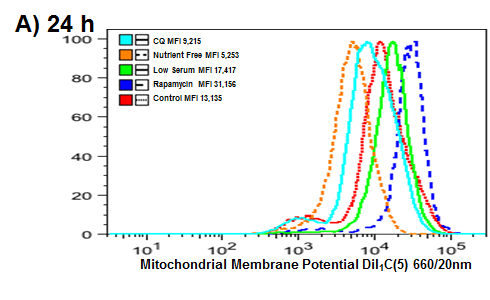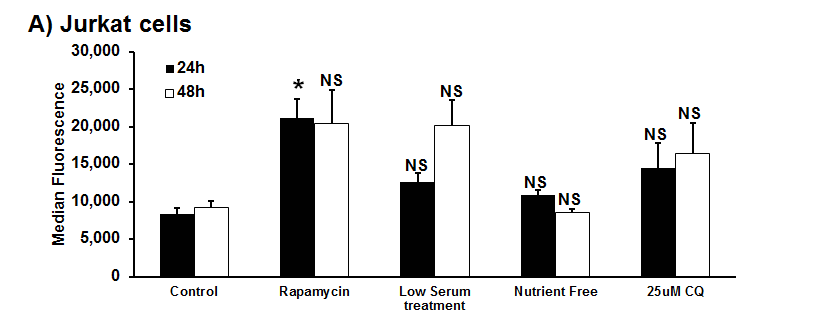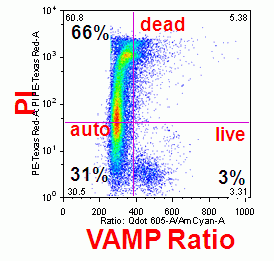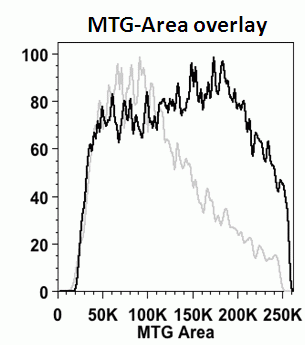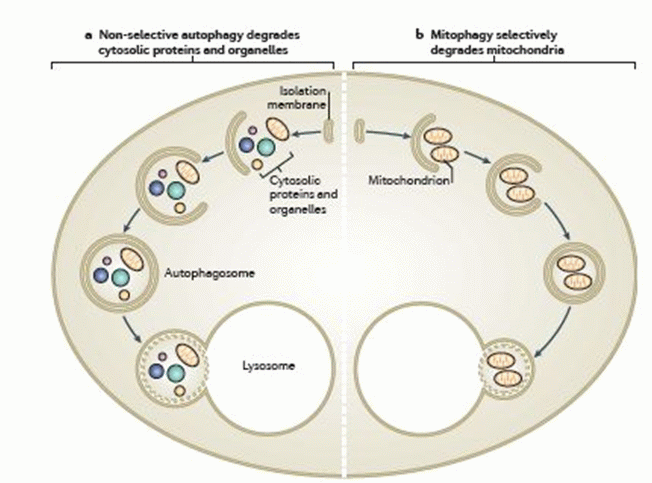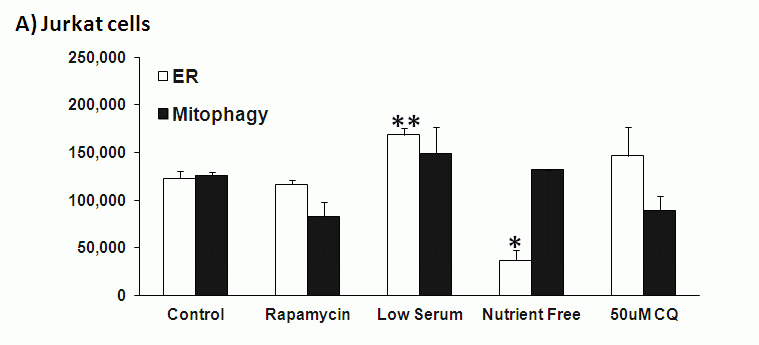Mitochondrial Function
Commonly employed reagents and cell treatments, such as staurosporine and UV-B irradiation cause mitochondrial mem- brane potential (mmp) to reduce before phosphotidylserine (PS) flipping. These changes in mmp can be detected by a range of fluorescent dyes, including carbocyanines, DiO, DilC, and TMRM and MitoTracker Red (CMXRos). All these dyes show a fall in fluorescence as mitochondrial membrane potential falls during apoptosis. However when cells are treated to induce autophagy the membrane potential of the inner mitochondrial membrane is modulated over a 48 h period depending on the mode of action of the drug employed to induce autophagy, see figure.
Drugs such as Chloroquine (CQ) as seen above modulate the inner mitochondrial membrane but also induce apoptosis, see figure.
Mitophagy
Microautophagy or mitophagy is another an autophagic process, which is an organelle specific process, whereby dysfunctional mitochondria are removed from the cell by this autophagic response to reduce the number of reactive oxygen species (ROS) over-producing mitochondria. These malfunctioning mitochondria can be aged or those with a high level of mutations in the mtDNA induced by high levels of ROS. Mitochondrial DNA has 10-20 times more mutations than nuclear DNA.
Mitochondria not only produce ATP from the process of oxidative phosphorylation on the inner mitochondrial membrane but also reproduce by the process of fission. This produces two daughter mitochondria one of which hosts the damaged parts with reduced inner membrane potential of the original mitochondria but also a fully functional daughter. The fission process can also stop excessive enlargement of mitochondria. Whilst, mitochondrial fusion of damaged mitochondria dilutes the individual mitochondrion level of damaged macromolecules, this also prevents the early removal of such mitochondria.
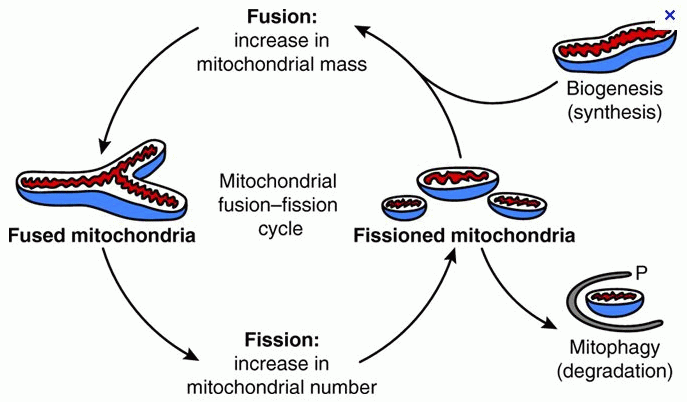
Mitophagy is a physiological process, which occurs during erythrocyte differentiation and during nutrient starvation, see figure. The level of relative mitochondrial fusion and fission within cells maintains mitochondrial homeostasis. Thus mitophagy provides a mechanism by which aged or ROS damaged mitochondria are ultimately removed resulting in the survival of the cell in question.
- MitoTracker Green Protocol
- MitoTracker Protocol DiIC1(5)

